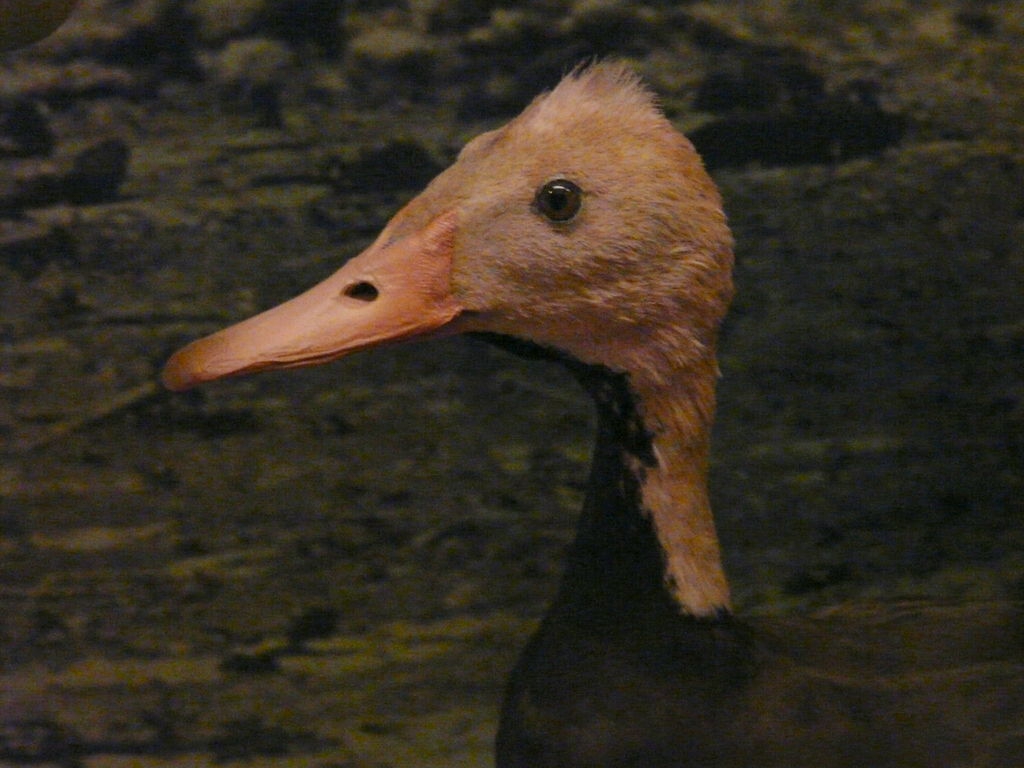| Citation |
BirdLife International. 2018. Rhodonessa caryophyllacea (amended version of 2016 assessment). The IUCN Red List of Threatened Species 2018: e.T22680344A125558688. https://dx.doi.org/10.2305/IUCN.UK.2016-3.RLTS.T22680344A125558688.en. Downloaded on 18 June 2020. |
Description |
JUSTIFICATION
This species has not been conclusively seen in the wild since 1949; it was always considered rare, and is likely to have declined severely through a combination of hunting and habitat loss. However, further surveys are needed of remote wetlands in northern Myanmar where there has been a possible recent sighting and credible local reports were received in 2006. Any remaining population is likely to be tiny, and for these reasons it is treated as Critically Endangered.
RANGE DESCRIPTION
Rhodonessa caryophyllacea was locally distributed in the wetlands of India, Bangladesh and Myanmar, and occurred rarely in Nepal, with most records from north-east India and adjacent Bangladesh. It was always considered uncommon or rare, and genetic analyses have suggested that the effective population size may have been small for poentially thousands of years (Ericson et al. 2017). It was last definitely seen in the wild in 1949, surviving until around the same time in captivity. Recent "sightings" and positive leads from a series of questionnaires about its possible continued existence in north-east India were the result of confusion with Red-crested Pochard Netta rufina. Surveys of the Sompeta Wetland in Andhra Pradesh identified potential suitable habitat for the species, although no individuals were seen (Sebastian et al. 2017).
Five searches in Kachin State, Myanmar, between April 2003 and December 2006 gained a possible sighting (in 2004), and credible reports from local fishermen, and including the most convincing reports to date during the 2006 survey focused at Nawng Kwin and the grasslands and oxbow lakes along the Indawgyi River, suggesting that it may still occur in the area (Tordoff et al. 2008). Further searches took place in January 2008 in northern Kachin State, focusing on the three sites from which there had been recent reports or claims, but the team failed to find convincing evidence of the speciess continued existence there (Eames 2008). In January 2014 a small team conducted a search around Khamti in north-west Myanmar following a possible sighting of the species by a farmer in 2011 (R. Thorns in litt. 2013). The search did not find evidence of the species in this area (Thorns 2014).
DESCRIPTION
Any remaining population is assumed to be tiny (numbering fewer than 50 individuals and mature individuals) based on a lack of records and failure of surveys to find it.
Trend Justification: The paucity of recent confirmed records prevents an assessment of population trend.
HABITAT AND ECOLOGY
It is shy and secretive, inhabiting secluded and overgrown still-water pools, marshes and swamps in lowland forest and tall grasslands, particularly areas subject to seasonal inundation and, in winter, also lagoons adjoining large rivers. Outside the breeding season it was usually encountered in small groups and occasionally flocks of 30-40. Some, and possibly all, populations undertook local seasonal movements, resulting in scattered historical records as far afield as Punjab, Maharashtra and Andhra Pradesh in India. Conjecture from researchers conducting surveys for the species has suggested that it may be nocturnal, explaining the difficulty in locating it, and the reason behind its unique colouration (J. Eames in litt. 2006).
THREATS
Its decline likely resulted from habitat loss. Clearance of forest and conversion of wetlands for agricultural land has destroyed much of its habitat, and the invasive alien species water hyacinth Eichhornia crassipes may have contributed to its decline by altering wetland habitats to the detriment of this species (J. Eames in litt. 2006). Additionally, it suffered year-round persecution during a period (the late 19th and early 20th centuries) when hunting levels in India were high. A number of other waterbird species have declined in South and South-East Asia as a consequence of human disturbance and/or hunting pressure and egg collection. However, these other species (e.g. White-winged Duck Cairinia scutulata) do persist in parts of South and South-East Asia, suggesting that hunting pressure alone is unlikely to have caused the speciess extirpation, and the role that historical hunting has played in its decline remains uncertain (Tordoff et al. 2008, J. Eames in litt. 2007).
CONSERVATION ACTIONS
Conservation Actions Underway
CITES Appendix I. CMS Appendix II. Throughout the 1950s there were attempts to clarify its status, culminating in a literature and museum specimen review. It was subsequently searched for in some key areas. Since 1956, it has been legally protected. Since 2003, BirdLife International in Indochina and the Biodiversity and National Conservation Association (BANCA) have conducted a number of searches in Kachin State, Myanmar, the most recent taking place in January 2008 (Eames 2008). A search was conducted around Khamti in north-west Myanmar in January 2014 but was unsuccessful (Thorns 2014).
Conservation Actions Proposed
Locate (provisionally using satellite imagery) and systematically survey any remaining remote and large tracts of suitable habitat within its former range, particularly north Bihar, Assam, India, and Kachin, Rakhine and possibly Chin States, Myanmar, and interview local hunters. Attempt night-time surveys given the speciess potential nocturnal habits (Tordoff et al. 2008). Should it be rediscovered, stringent protection measures should be implemented to ensure the survival of any populations. Where possible introduce formal protected area status or non-formal management by local stakeholders for key wetland sites that may support this species (and which are known to support other Globally Threatened waterbirds) (Tordoff et al. 2008). |

